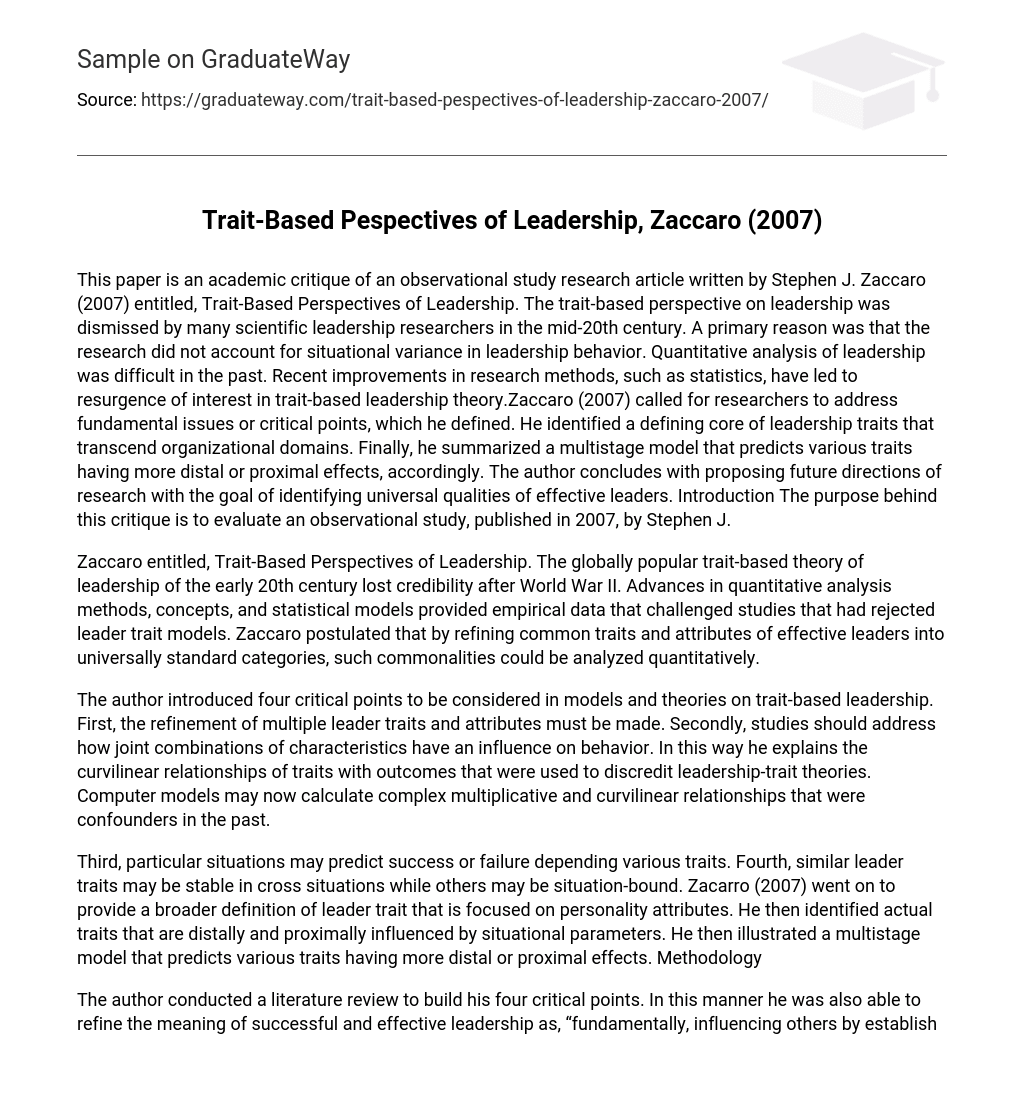This paper is an academic critique of an observational study research article written by Stephen J. Zaccaro (2007) entitled, Trait-Based Perspectives of Leadership. The trait-based perspective on leadership was dismissed by many scientific leadership researchers in the mid-20th century. A primary reason was that the research did not account for situational variance in leadership behavior. Quantitative analysis of leadership was difficult in the past. Recent improvements in research methods, such as statistics, have led to resurgence of interest in trait-based leadership theory.Zaccaro (2007) called for researchers to address fundamental issues or critical points, which he defined. He identified a defining core of leadership traits that transcend organizational domains. Finally, he summarized a multistage model that predicts various traits having more distal or proximal effects, accordingly. The author concludes with proposing future directions of research with the goal of identifying universal qualities of effective leaders. Introduction The purpose behind this critique is to evaluate an observational study, published in 2007, by Stephen J.
Zaccaro entitled, Trait-Based Perspectives of Leadership. The globally popular trait-based theory of leadership of the early 20th century lost credibility after World War II. Advances in quantitative analysis methods, concepts, and statistical models provided empirical data that challenged studies that had rejected leader trait models. Zaccaro postulated that by refining common traits and attributes of effective leaders into universally standard categories, such commonalities could be analyzed quantitatively.
The author introduced four critical points to be considered in models and theories on trait-based leadership. First, the refinement of multiple leader traits and attributes must be made. Secondly, studies should address how joint combinations of characteristics have an influence on behavior. In this way he explains the curvilinear relationships of traits with outcomes that were used to discredit leadership-trait theories. Computer models may now calculate complex multiplicative and curvilinear relationships that were confounders in the past.
Third, particular situations may predict success or failure depending various traits. Fourth, similar leader traits may be stable in cross situations while others may be situation-bound. Zacarro (2007) went on to provide a broader definition of leader trait that is focused on personality attributes. He then identified actual traits that are distally and proximally influenced by situational parameters. He then illustrated a multistage model that predicts various traits having more distal or proximal effects. Methodology
The author conducted a literature review to build his four critical points. In this manner he was also able to refine the meaning of successful and effective leadership as, “fundamentally, influencing others by establishing a collective effort and managing, shaping, and developing the collective activities…” (p. 9). He then clarified the role of situations into three circumstances which he calls arguments. He analyzed models of leader individual difference and performance into his own, entitled, A Model of Leader Attributes and Leader Performance.
Findings and Interpretations This category is not applicable in this case since the proposed model has not been tested sufficiently. Conclusions The author concludes with proposing a number of possible future directions of research with the goal of identifying universal qualities of effective leaders. His belief is that these recommendations combined with modern methodological and statistical resources will help reach this goal.





